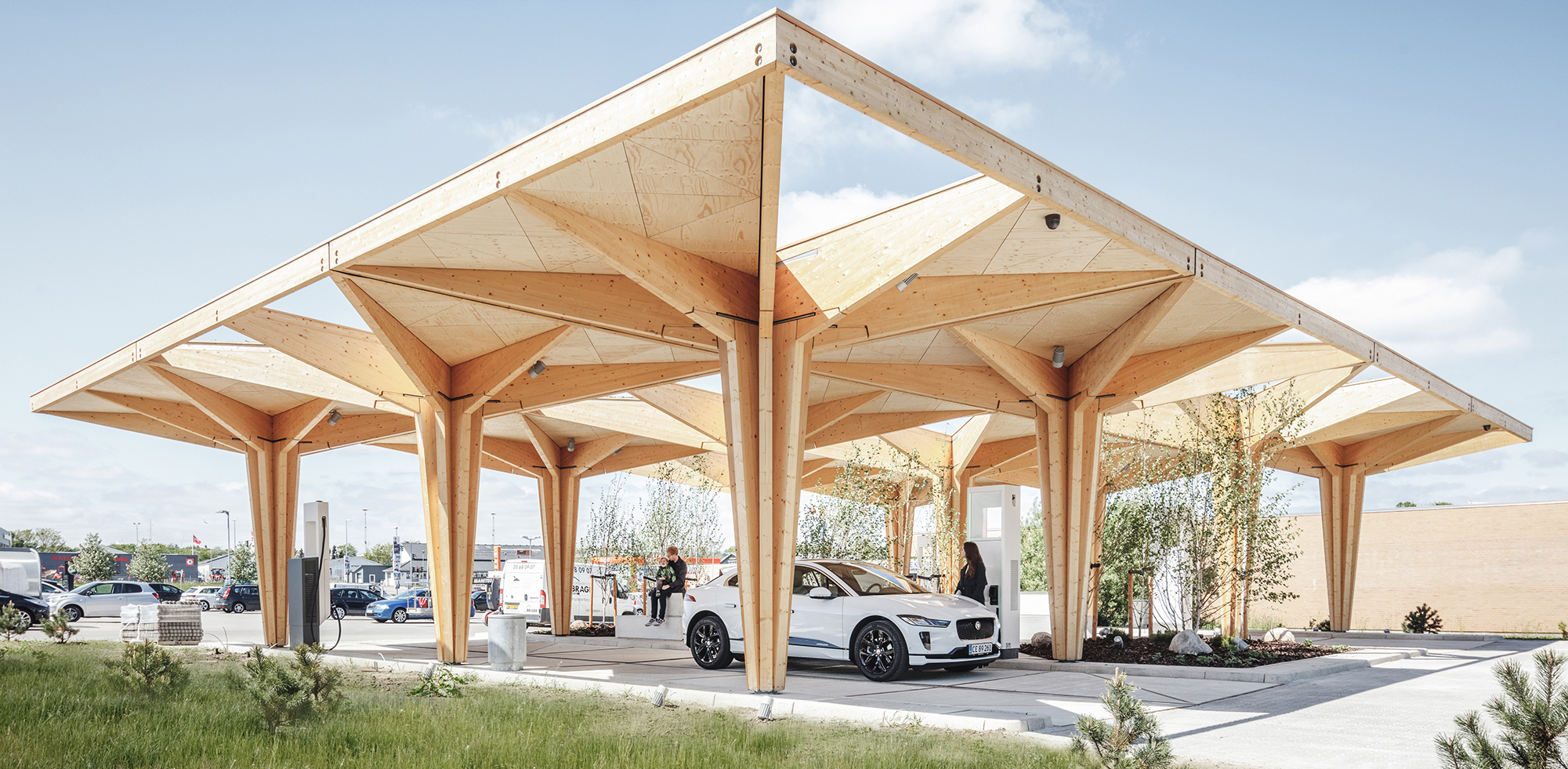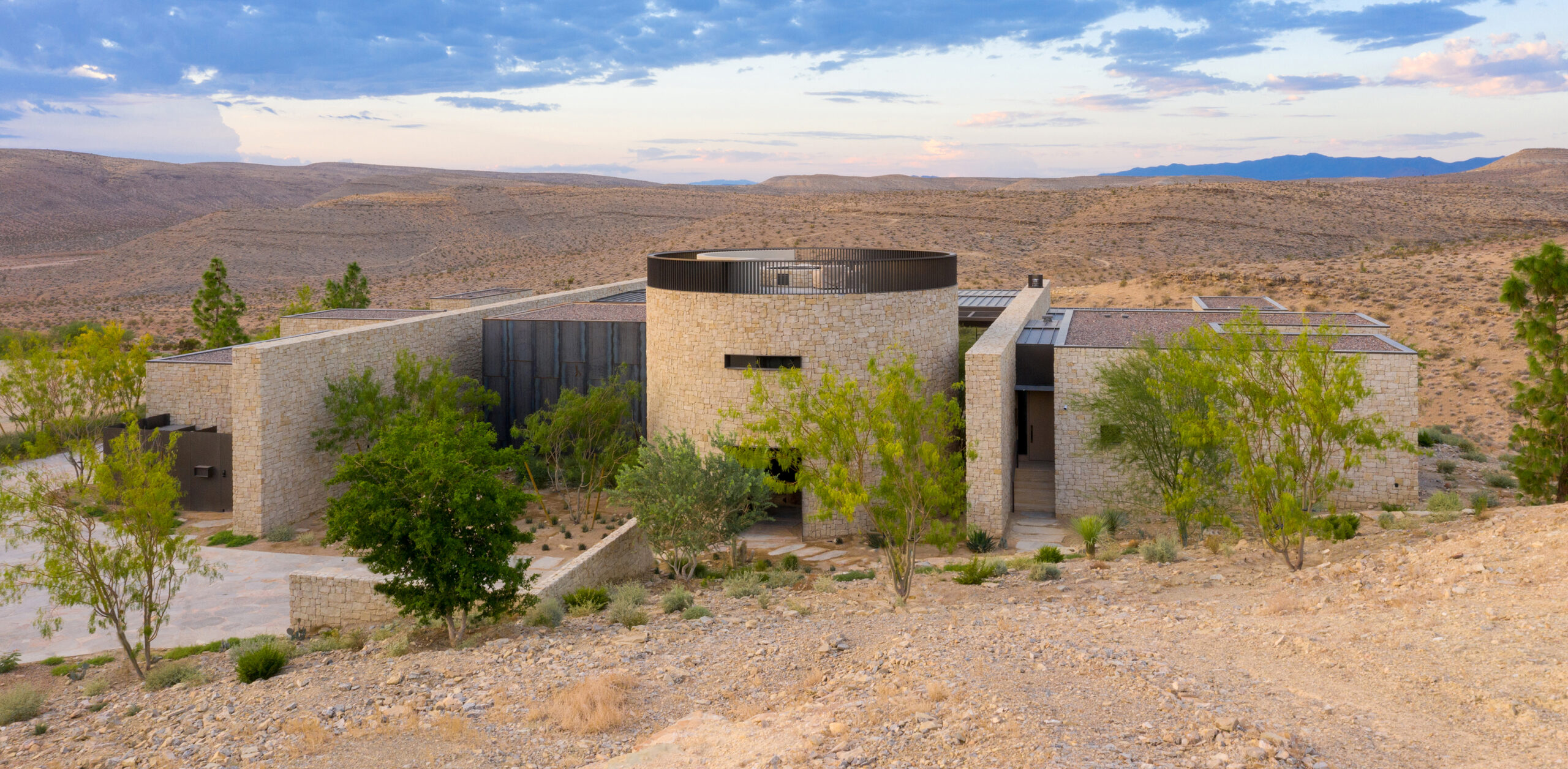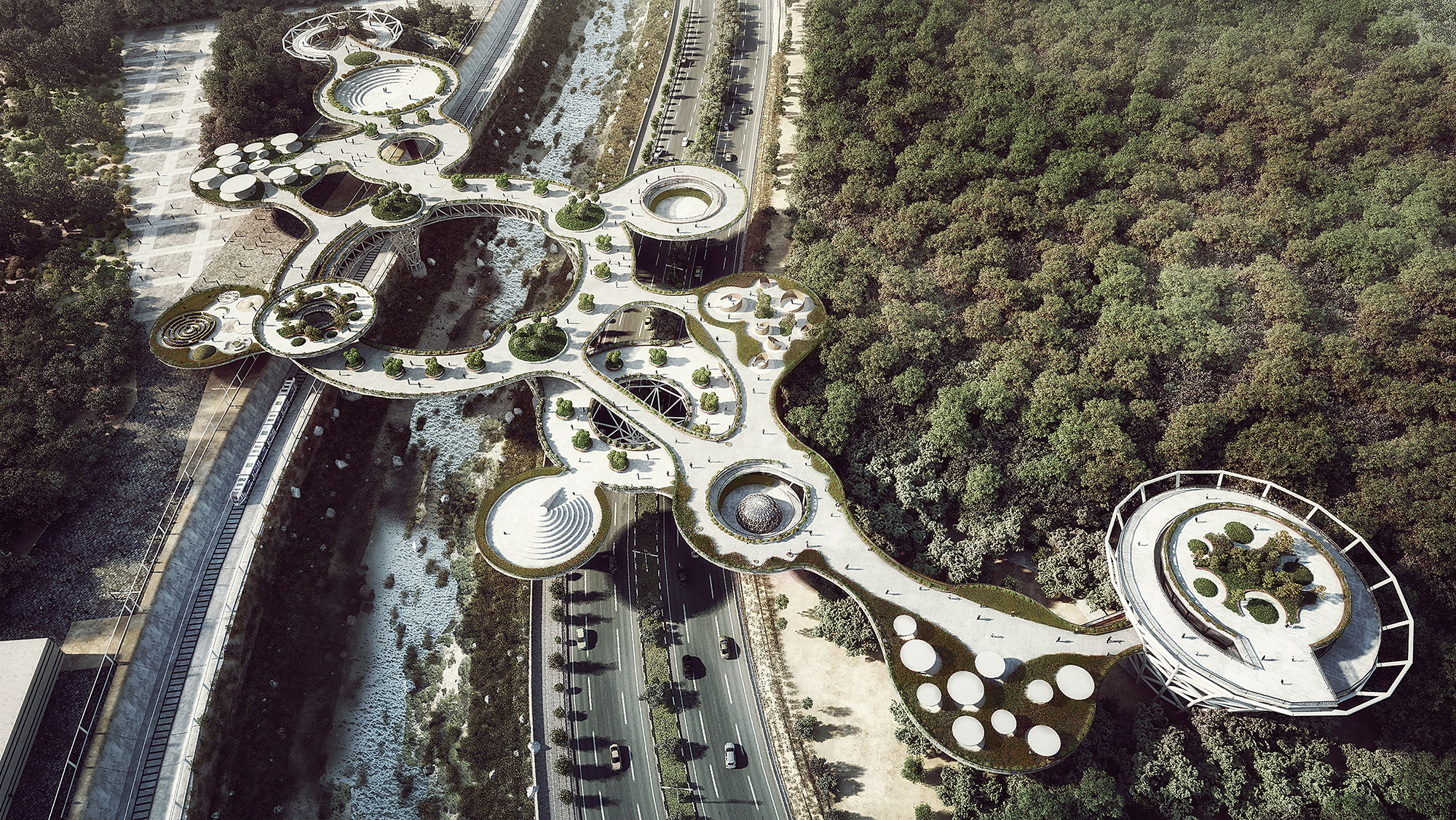Architects: Want to have your project featured? Showcase your work by uploading projects to Architizer and sign up for our inspirational newsletters.
How smart and green a city is can be determined by environmental initiatives, progressive urban planning, infrastructure with technology at its core and the availability of IoT-monitored resources for people working and living in the city.
While smart cities focus on cutting-edge communication technologies around city services, green cities focus on environmental issues. Each may follow different strategies, but both have the same goal: to improve the life quality of their residents.
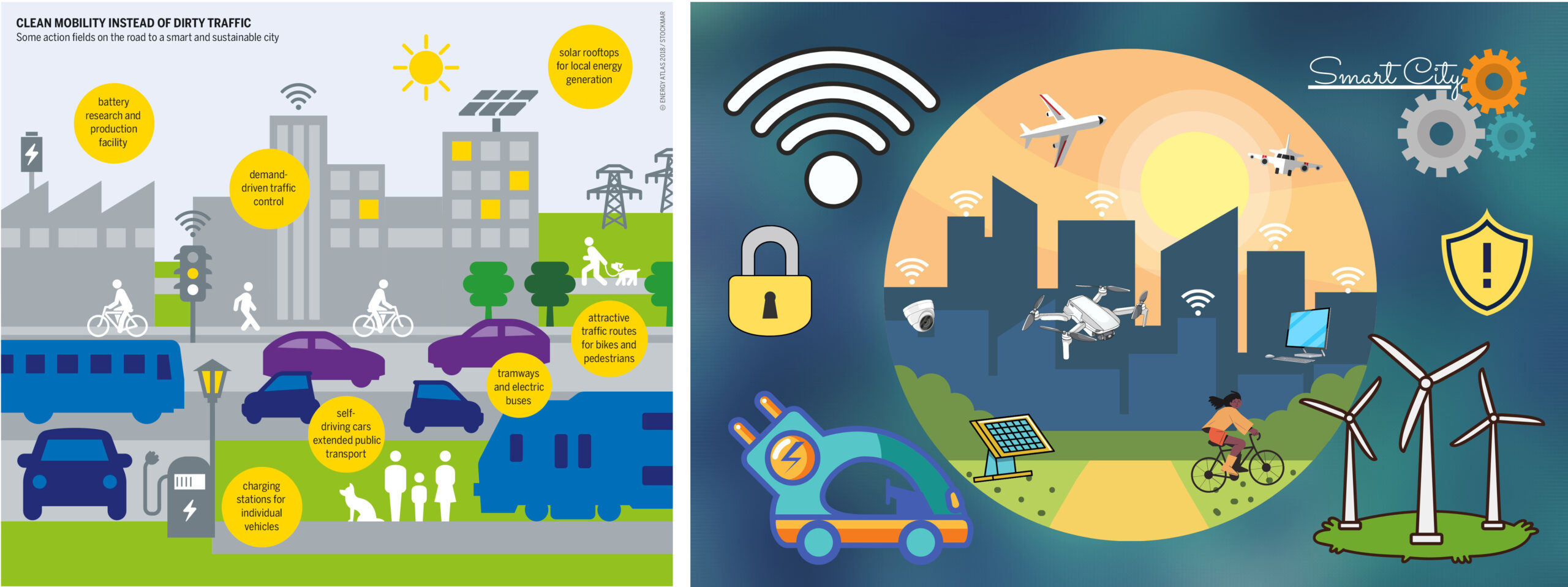
Left: Clean mobility instead of dirty traffic: some action fields on the road to a smart and sustainable city. Illustration by Bartz/Stockmar, CC BY-SA 4.0. Right: Smart City Illustration. Image by Moondance via Pixabay.
How green are smart cities, and how smart are green cities? Finding the right balance could be the key to city growth in a sustainable way that benefits urban dwellers. The success may lie in the residents’ involvement level with the available technologies.
The Benefits of a Sci-Fi City

Self-driving cars, smart buildings, data-driven infrastructure… The smart city of the future will be a complex, interconnected network, bringing the Internet of Things to life on a grand, urban scale. Illustration by JCT 600 via Flickr
Smart cities guide their management and growth through a complex network of communication devices that can be integrated into vehicles, home appliances and solar rooftops, for instance. These devices collect data to deliver improved services such as energy distribution and conservation, traffic flow, transportation and the management of public utility systems.
Sensors, another device type that responds to environmental signals, have become extraordinarily efficient at enabling early warning for natural disasters such as floods, droughts and storms or detecting problems like leaks in utility pipes. The benefits are outstanding, but at the same time, to some of us, this sophisticated technology seems mind-blowing, like science fiction made real.
Paving the Path Toward Healthier and Sustainable Urban Environments
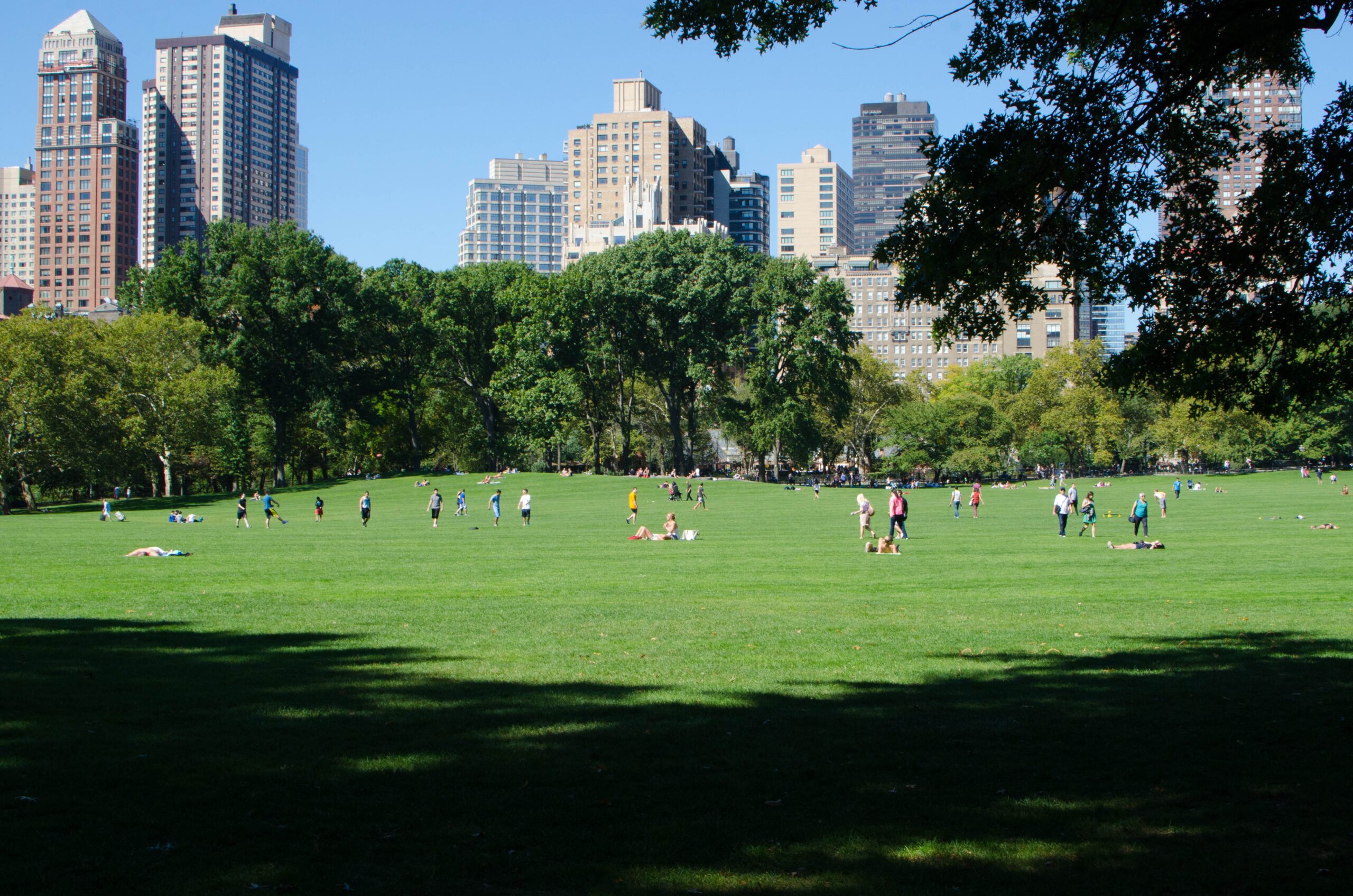
People playing soccer on a green grass field during the daytime. Image by Carl Newton via Unsplash
Smart cities have the tools to collect and manage data that ultimately enable evidence-based decision-making. Green cities, on the other hand, are perhaps more sensitive to problems of urbanization and climate change effects. Addressing these problems efficiently could pave the path toward a healthier and more sustainable life quality in urban environments. Green cities promote the preservation of the natural world alongside economic development, social inclusiveness and wellness. Studies demonstrate that green spaces have beneficial effects on these aspects as well as on biodiversity and air quality, ensuring that cities are better places to live.
Platforms such as Green Cities Europe push for more green public spaces with innovative ideas addressing topics like climate change, economy, biodiversity, and social cohesion. The platform aims at assisting city planning authorities with scientific backing through congresses, seminars, PR activities and the installation of the Green Cities Awards. The goal is to create awareness and encourage investment of more green in public urban areas. Cities like Amsterdam, Copenhagen, Barcelona, New York, San Francisco, Vancouver, Singapore and Sydney set an example of green, sustainable cities, implementing regulations to lower emissions and optimize energy use, allowing collaborative innovation across governments, businesses and citizens, and creating green spaces to mitigate the effects of pollution and minimize the heat island effect.
Community Engagement

Network accessibility. Photo by Mohamed Hassan via PxHere (left); Network Internet of Things. Image by jeferrb via Pixabay (right)
Smart and green initiatives can guide the design of a city model with a community involvement process to attain optimal outcomes. Making cities’ communication technologies available to citizens is critical for the success of this process, driving actions toward practical benefits. The distinction between smart and green cities dissolves, and we can observe how city management and development strategies converge to shape the future of cities with sustainability in mind. We are talking less about smart and green cities and more about sustainable cities.
With climate change and the challenges associated with urbanization as major challenges that cities face, a sustainable approach to city management and growth seems to be the right direction, and prospects for achieving goals are optimistic.
Top image: Ultra-Fast Charging Stations by Cobe, Fredericia, Denmark
Architects: Want to have your project featured? Showcase your work by uploading projects to Architizer and sign up for our inspirational newsletters.
